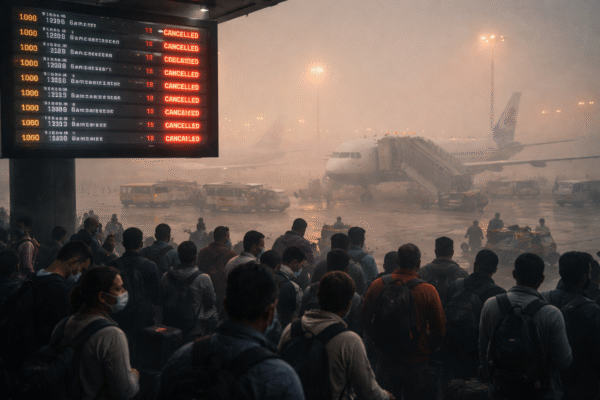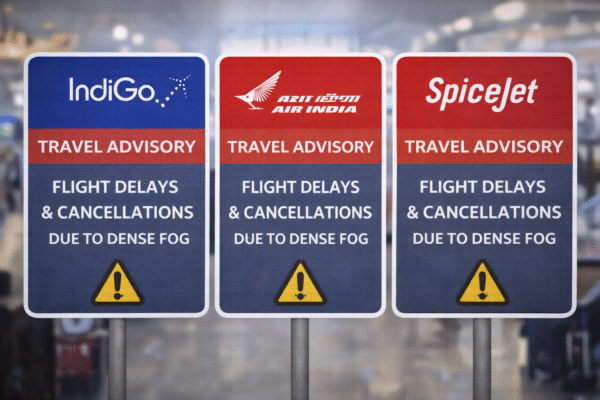Travelers across China faced one of the most challenging mornings of the year on September 17, 2025, as widespread flight cancellations disrupted journeys through some of the country’s busiest airports. Both Air China and China Eastern Airlines announced more than forty cancellations combined, leaving thousands of passengers stranded at terminals in Beijing, Chengdu, Shanghai, and other key hubs.
The disruption affected both domestic and regional flights, creating long delays, extended waiting times, and a ripple effect on tourism and local economies. With airports like Beijing Capital International (PEK), Chengdu Tianfu (TFU), and Shanghai Pudong (PVG) at the center of the crisis, many travelers were forced to scramble for rebookings or wait overnight in crowded terminals.
Causes of the Cancellations
The cancellations stemmed from a mix of operational issues and adverse weather conditions across multiple regions. Reports from aviation authorities indicated that air traffic control difficulties and technical glitches at several major hubs, including Beijing and Chengdu, contributed heavily to the disruptions.
Compounding the issue were weather forecasts predicting sudden storms, particularly in southern regions. Safety concerns forced airlines to ground scheduled flights, while logistical challenges slowed efforts to reschedule departures. The combination of operational bottlenecks, aircraft readiness problems, and severe weather created a perfect storm for chaos.
Air China Cancellations: Major Impact on Northern and Central Routes
Air China was among the hardest hit, with dozens of flights affected. Beijing Capital International and Chengdu Tianfu International saw significant cancellations, while services from Shanghai, Wuhan, Hangzhou, and Nanjing were also disrupted.
Passengers planning to travel to destinations such as Zhuhai, Fuzhou, Haikou, and Ningbo were among those most affected. In many cases, the cancellations involved popular commuter and leisure routes, stranding both business travelers and tourists. Some high-profile cancellations included connections between Beijing and Hangzhou, Chengdu and Ningbo, as well as long-haul domestic flights linking Beijing and Zhuhai.
The scale of disruption highlighted the reliance on Air China’s extensive domestic network, which connects regional centers with China’s largest cities.
China Eastern Airlines Cancellations: Widespread Regional Effects
China Eastern Airlines also announced significant cancellations, with disruptions centered at Shanghai Pudong and Chengdu Tianfu airports. Flights from Xi’an, Hangzhou, and Kunming were also impacted, frustrating travelers bound for destinations in southern and eastern China.
Tourist-heavy routes such as Shanghai to Guilin and Shanghai to Sanya faced cancellations, directly affecting those headed for some of the country’s most popular leisure destinations. Similarly, passengers attempting to travel from Chengdu to Zhuhai or Guangzhou faced extended delays or were rerouted through alternative hubs.
The cancellations underscored the challenges of maintaining reliability across a busy domestic network, especially when weather and technical issues converge.
Passenger Frustration: Long Lines and Delayed Rebookings
At Beijing Capital International Airport and Chengdu Tianfu International Airport, chaotic scenes unfolded as thousands of passengers crowded rebooking counters. Long lines stretched across terminal halls as travelers waited for alternative flight options.
Some passengers reported waiting hours without clear communication, while others were offered rerouted journeys requiring multiple connections. Families traveling with children and international tourists found the disruption particularly stressful, as language barriers and limited hotel availability compounded the difficulties.
For many, overnight stays at airport hotels became the only option, with demand far exceeding supply in some areas. Airports deployed additional staff to help manage the surge, but the sheer scale of stranded travelers made quick resolutions nearly impossible.
Tourism and Economic Impact
Beyond individual inconveniences, the cancellations dealt a blow to local tourism and businesses. Popular attractions such as Beijing’s Forbidden City, Shanghai’s Bund, and Chengdu’s Giant Panda Base saw fewer visitors than anticipated. For tour operators and hospitality providers, the cancellations translated into last-minute cancellations of bookings and a noticeable decline in daily visitor numbers.
In cities where domestic tourism forms a significant part of the economy, the disruption served as a stark reminder of how vulnerable travel and tourism remain to operational and weather-related challenges. The ripple effects extended beyond airlines and airports, affecting restaurants, hotels, and cultural attractions reliant on steady visitor flows.
Airlines and Authorities Respond
Both Air China and China Eastern issued statements acknowledging the disruption and apologized to affected passengers. The airlines confirmed that technical teams and customer service staff were working around the clock to rebook stranded travelers and resume operations as quickly as possible.
Civil Aviation Administration of China (CAAC) officials also confirmed that safety remained the top priority, with weather conditions closely monitored before allowing flights to resume. Authorities emphasized the importance of operational stability, particularly as China continues to promote domestic tourism and expand air travel capacity.
Advice for Travelers
For those scheduled to travel in the coming days, authorities advised monitoring airline announcements and airport updates closely. Travelers were encouraged to allow extra time for check-in and rebooking, keep travel documents and booking details handy, and prepare for possible last-minute changes to itineraries.
Flexible planning, including considering alternative transportation options such as high-speed rail, may also provide relief in case of further disruptions. China’s extensive rail network remains a strong alternative to domestic flights, particularly between major cities such as Beijing, Shanghai, and Chengdu.
Conclusion: A Day of Travel Chaos
The September 17 wave of cancellations by Air China and China Eastern Airlines highlighted the fragility of even the most advanced travel networks. For thousands of stranded passengers, the day brought frustration, extended waits, and interrupted plans.
As weather conditions improve and technical challenges are resolved, services are expected to return to normal. However, the disruption served as a reminder to travelers and tourism businesses alike of the importance of preparation, flexibility, and resilience when navigating one of the world’s busiest travel markets.
For more travel news like this, keep reading Global Travel Wire
















